Flavors of New Orleans 101 {Video}featured
New Orleans is one of my favorite eating towns. Granted, San Francisco is where my heart is, but New Orleans speaks to me. New Orleanians just seem to eat life up with gusto. And I love that that they have managed to preserve a culinary history and food culture that is so distinctly their own. That’s why I was so excited when Zatarain’s invited me to join their Krewe this year.
Zatarain’s has been making New Orleans-style food since 1889. I headed down to the Big Easy (along with Rachel from A Southern Fairytale, Kristen from Dine & Dish, Laura from Super Glue Mom, and Jim from The Busy Dad Blog) to start my education on the flavors of New Orleans…
…(aka eat lots of King Cake)!
We started our trip with a visit to the Zatarain’s plant where we got a little history lesson on the Cajun and Creole influences of New Orleans cuisine. If you’re wondering what the difference is between Cajun vs. Creole, here’s a quick comparison:
- Cajun = derived from French Acadians who settled in Louisiana. Cajun recipes reflect not only influence from France, but also from about 150 years of living in Nova Scotia and New Brunswick. Cajun cuisine is heavy on spices, seafood, and often uses a dark roux as the base of many dishes.
- Creole = derived from the Spanish word “criollo” which means “a child born in the colony,” referring to native-born Louisianans of French and/or Spanish descent. Creole recipes tended to be more cross-cultural, including not only French and Spanish traditions, but also those of other European and African countries. Creole cuisine is all about rich sauces, and typically uses more butter, cream, and tomatoes than Cajun dishes.
Both styles of cooking rely heavily on the culinary “trinity” — equal parts chopped green bell peppers, onions, and celery — but my take away is that Cajun food tends to be on the spicier side, while Creole food tends to be on the richer side. The blend of Cajun and Creole influences is what makes New Orleans cuisine so exciting.
While Zatarain’s first started with root beer extract (which I can’t wait to experiment with), it quickly grew to encompass other products that reflect the culinary fabric of the city, like Creole mustard, spice blends, and rice mixes. Today, Zatarain’s makes more than 200 products, all based on New Orleans-style recipes and preparations.
For NOLA dining newbies, here is a rundown of dishes you are bound to come across while you’re in the Big Easy:
- Jambalaya: A hearty one-pot dish of rice, meat, and vegetables. Jambalaya starts with the trinity (peppers, onions, celery) to which chicken and sausage, and sometimes seafood, is added. Rice and stock are added at the end and simmered until everything comes together.
- Red Beans and Rice: A traditional Monday night dinner in New Orleans because back in the day, Monday was laundry day, and red beans and rice was the kind of dish you could just leave on the stove and forget about until it was time to eat. I love it that this Monday night tradition is still alive to this day.
- Gumbo: A stew of rich stock, meat or shellfish, and the trinity, usually served over rice. Gumbo is named after one of its two main ingredients, okra and filé (ground sassafras leaves that smell like tea and have a woodsy flavor like root beer). In the Bantu language spoken by many of the slaves from West Africa, okra was known as ki ngombo; in the language of the native Choctaw people, filé was called kombo. The okra helps to thicken the stew, while the filé seasons and adds flavor.
- Étouffée: In French, the word “étouffée” literally means “smothered” or “suffocated”. Most commonly, you’ll see a seafood étouffée like crawfish, shrimp, or crab on the menu…it is, you guessed it, smothered in a rich, seasoned sauce, served over rice.
- Crawfish Boil: If you’ve never experienced a real New Orleans crawfish boil, you need to find one stat (boil season is just starting to ramp up and should run until May). It is messy, delicious, community fun – if you’re unsure how to peel and eat crawfish, watch a local and learn how to suck the heads.
- Remoulade Sauce: The city’s ubiquitous condiment of choice. Unlike remoulade found elsewhere, authentic New Orleans-style remoulade sauce is made with a Creole mustard base, not mayonnaise, and has more kick to it.
Coming Soon: A progressive eating tour through three of John Besh’s restaurants (in one day, because I’m hardcore like that); and a list of my Top Bites of New Orleans!
In the meantime, I put together a little video which I hope captures the spirit of this vibrant — and incredibly delicious — city. Enjoy!
Disclosure: I wrote this post while participating in the Zatarain’s 2012 Ambassador Program. I was compensated for my time but all opinions are my own.




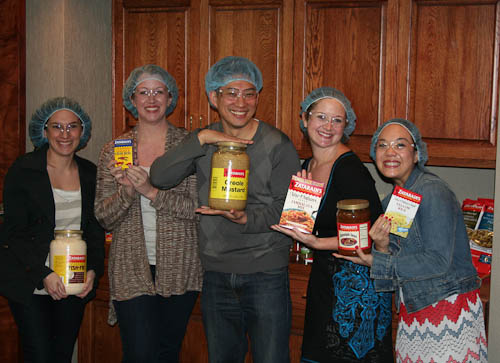


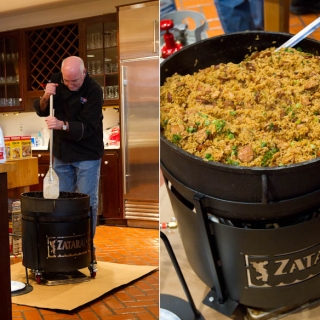


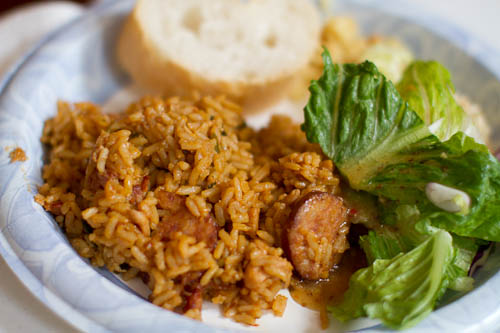

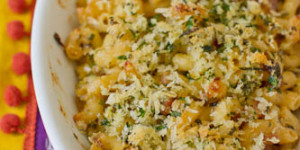

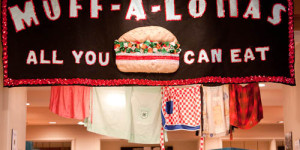

Add comment